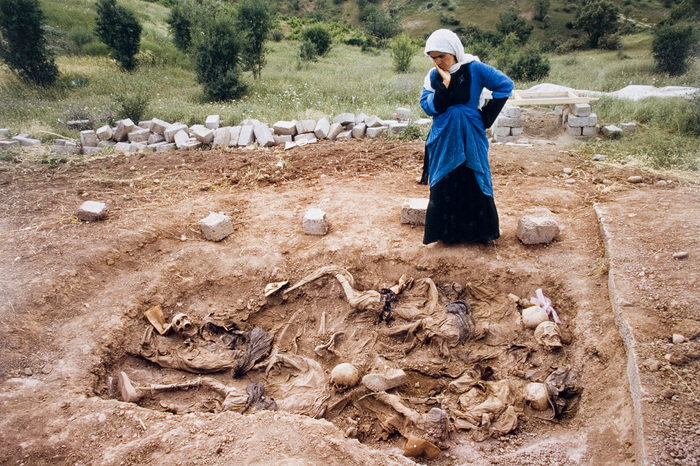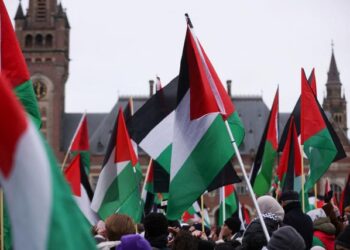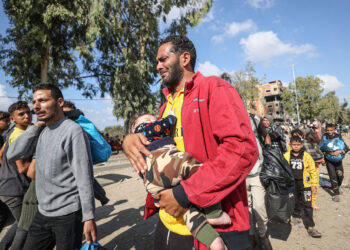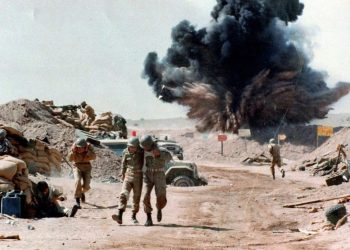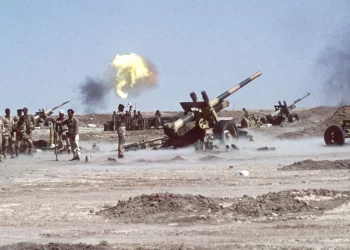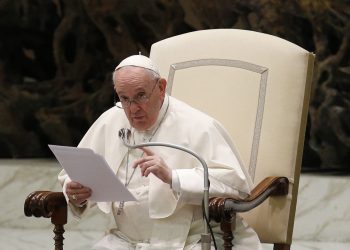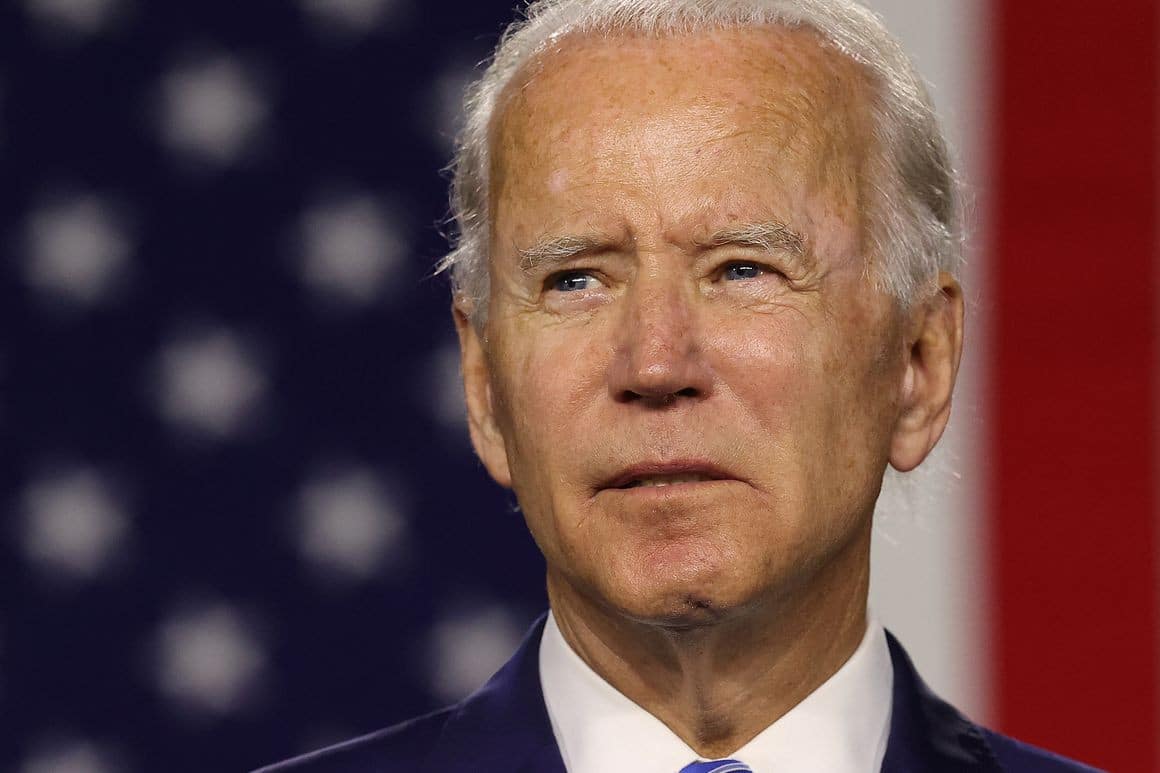Human Lives Human Rights: Adil Majeed looked distressed as he smoked a cigarette, narrating the disastrous events of the late 1980s Anfal military offensive.
Unleashed by the former Iraqi regime of Saddam Hussein against Kurdish people in the north, the campaign killed at least 100,000 Kurds, mostly civilians, with some estimates suggesting 180,000 people died. Thousands went missing and hundreds of villages were destroyed.
Rights organizations say the Anfal campaign was a systematic ethnic cleansing amounting to genocide.
Saddam claimed he was quelling a rebellion after Kurdish Peshmerga fighters – who were fighting against the government – sided with the enemy during the 1980-88 Iran-Iraq war, and used Kurdish villages as their safe havens.
As part of the offensive, Iraqi warplanes and artillery pounded the Kurdish town of Halabja with mustard gas and the deadly nerve agent sarin on March 16, 1988. About 5,000 people – mainly women and children – were killed.
Weeks later, another town, Goptapa was targeted with chemical weapons. The death toll in Goptapa was arguably only exceeded by that of Halabja.
Majeed, who fled from his home in a nearby village, remembered seeing the residents of Goptapa suffocate from the poisonous gases.
“I saw people from Goptapa village on the banks of the Lesser Zab River suffering from the effects of the chemical weapons used by the Iraqi army,” he told Al Jazeera as he sat in his home in Chamchamal, an Iraqi Kurdish town located west of Sulaimaniyah City.
“We fled in fear of our lives, but we were soon arrested by the Iraqi forces,” recalled Majeed, who was 15 at the time. Although Majeed was taken to prison, his young and agile body helped him escape.
“Only one soldier was guarding the prison door. When he was off-guard, I seized the moment and climbed over the door,” said Majeed. “He fired several bullets towards me, but fortunately I was not hurt and managed to escape.”
While Majeed lived to tell the tale, he lost eight members of his family during the campaign, along with 163 people from his village in the Garmiyan area of the semi-autonomous Kurdish region. His only wish is to find their remains.
“After 33 years I cannot forget them,” he sobbed. “I wish I could embrace their relics.”
Kurdish officials say the whereabouts of thousands who went missing during the offensive is still unclear. Families have been trying to identify their bodies in mass graves.
In July 2019, four mass graves with dozens of bodies believed to be Kurds killed by Saddam’s regime were found in the Samawa desert of al-Muthanna province in southern Iraq.
During the Iran-Iraq War in the 1980’s, the Iranians provided support to the Kurdish guerilla forces in their battle for independence in Northern Iraq and to open another front to divide Iraqi military operations. The Iraqi military largely put down the Kurdish rebellion. But Kurdish guerrillas joined with Iranian units in carrying out attacks on the Iraqi military. The Iraqi military responded by conducting ground attacks by army units, aerial bombing, destruction of villages, concentration camps, mass executions and chemical warfare targeting the Kurdish population. This was called the Anfal Campaign by the Iraqis and Kurdish Genocide by the international community.
In March of 1988, Iranian troops and Kurdish guerrillas took control of the Iraqi military base in Halabja. Two days later, the Iraqi Air Force fired rockets and napalm into Halabja’s residential areas followed by a poison gas attack. Some 3,000-5,000 innocent civilian Kurds, mostly women and children, were killed and 10,000 or more severely injured. It was the most brutal gas attack since poison gas was outlawed after World War 1 in 1918 and a horrific act that had never been done before.
On 14 March, a combined force of Iranian Pasdaran (Revolutionary Guards) and Kurdish peshmergas crossed the border into Iraq, swooping down on the entire district of Halabja, which incorporates several sub-districts such as Khurmal, as well as mujamma‘at, and borders the Sirwan (or Darbandikhan) lake. Militarily, the advance was a complete rout for the Iraqis. Many troops drowned in the lake; others managed to flee the area; thousands were captured. The Kurdish parties took control of the towns of Halabja and Khurmal, while the Iranians seized the Iraqi defenses on the surrounding hilltops. On the 15th, Halabja was fully in the peshmergas’ hands. Residents later recounted that, while elated at being free from Iraqi oppression, they also had a sense of foreboding, having intimate knowledge of the regime and its brutal ways: A year earlier, Iraqi security forces had razed one of Halabja’s neighborhoods following street protests over the village destruction campaign.
In the afternoon of the 16th, the Iraqi air force launched a massive chemical strike against the area of Halabja and Khurmal. Although no accurate body count exists (survivors assisted by peshmergas and their Iranian allies hastily buried the dead in makeshift mass graves), it is generally reported that 5,000 perished, mostly from nerve gas, the vast majority civilians. The Pasdaran and peshmerga forces were equipped against chemical attacks and therefore suffered only minor losses.
In addition, The PHR team interviewed a Kurdish teenager, Taymour Abdullah, who was presented by the PUK as the only survivor of the Anfal execution grounds. The boy described in detail what had happened to him and his family: their detention near their village in Germian in April 1988, their transfer to Topzawa, their separation from his father, and their transfer to an area that appeared far from Kurdistan, where they were off-loaded at nightfall, pushed toward an open pit, and summarily shot by an execution squad. Taymour, injured but alive, used the cover of darkness to climb out of the mass grave and run into the desert. Here he was found by Bedouins who hid him in the nearby town of Samawa, cared for him and, after 1991, returned him to his surviving relatives in Kurdistan. Until this day, Taymour Abdullah is the only known child survivor (he was 12 at the time) of the Anfal campaign, and the only known eyewitness to the mass killing of women and children.
However, the author, working for Human Rights Watch in 1992-1993, was able to locate and interview six other survivors of the killing grounds, all adult males. They described a similar process: detention, transfer, separation, further transfer, arrival at killing grounds in Iraq’s western desert at nightfall, and then mass execution, which they, miraculously, succeeded in surviving.
Convention on the Rights of the Child (OHCHR)
The point to be made here is that it is true that the case of the murder of Indigenous Canadian children by the Church dates back to the nineteenth century, more than a hundred years before the Convention on the Rights of the Child, but this time interval does not negate the Canadian government’s social responsibility to pursue and compensate victims for their relatives. Therefore, this convention will be examined in the following provisions related to the responsibility of the member states.
Article 1
For the purposes of the present Convention, a child means every human being below the age of eighteen years unless under the law applicable to the child, majority is attained earlier.
Article 2
- States Parties shall respect and ensure the rights set forth in the present Convention to each child within their jurisdiction without discrimination of any kind, irrespective of the child’s or his or her parent’s or legal guardian’s race, color, sex, language, religion, political or other opinion, national, ethnic or social origin, property, disability, birth or other status.
- States Parties shall take all appropriate measures to ensure that the child is protected against all forms of discrimination or punishment on the basis of the status, activities, expressed opinions, or beliefs of the child’s parents, legal guardians, or family members.
Article 3
- In all actions concerning children, whether undertaken by public or private social welfare institutions, courts of law, administrative authorities or legislative bodies, the best interests of the child shall be a primary consideration.
- States Parties undertake to ensure the child such protection and care as is necessary for his or her well-being, taking into account the rights and duties of his or her parents, legal guardians, or other individuals legally responsible for him or her, and, to this end, shall take all appropriate legislative and administrative measures.
Article 6
- States Parties recognize that every child has the inherent right to life.
- States Parties shall ensure to the maximum extent possible the survival and development of the child.
Article 13
- The child shall have the right to freedom of expression; this right shall include freedom to seek, receive and impart information and ideas of all kinds, regardless of frontiers, either orally, in writing or in print, in the form of art, or through any other media of the child’s choice.
- The exercise of this right may be subject to certain restrictions, but these shall only be such as are provided by law and are necessary:
(a) For respect of the rights or reputations of others; or
(b) For the protection of national security or of public order, or of public health or morals.
Article 14
- States Parties shall respect the right of the child to freedom of thought, conscience and religion.
- States Parties shall respect the rights and duties of the parents and, when applicable, legal guardians, to provide direction to the child in the exercise of his or her right in a manner consistent with the evolving capacities of the child.
- Freedom to manifest one’s religion or beliefs may be subject only to such limitations as are prescribed by law and are necessary to protect public safety, order, health or morals, or the fundamental rights and freedoms of others.
Article 15
- States Parties recognize the rights of the child to freedom of association and to freedom of peaceful assembly.
- No restrictions may be placed on the exercise of these rights other than those imposed in conformity with the law and which are necessary in a democratic society in the interests of national security or public safety, public order, the protection of public health or morals or the protection of the rights and freedoms of others.

